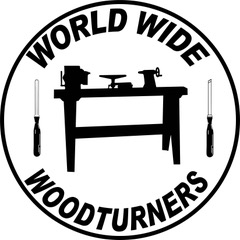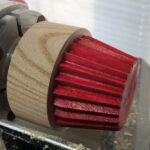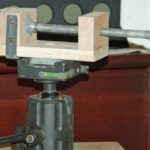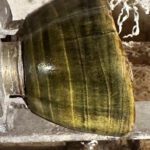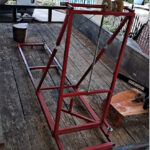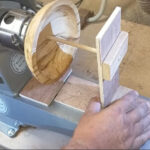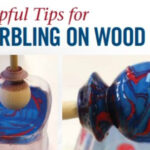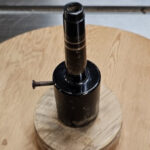- Turning a Cupcake Box with Ron Pollmann
 The following documents were provided by Ron Pollmann to accompany his demonstration on 2025-03-05. The documents include 2 PDFs. One contains a graphic description, the second is a detail instructions list. Enjoy. ...
The following documents were provided by Ron Pollmann to accompany his demonstration on 2025-03-05. The documents include 2 PDFs. One contains a graphic description, the second is a detail instructions list. Enjoy. ... - A Carving Vise by David Swain


 After being warned about burrs eating fingers. I decided to make a carving vise to use with my Kutzall burrs. I didn’t want a 1" (25mm) burr ...
After being warned about burrs eating fingers. I decided to make a carving vise to use with my Kutzall burrs. I didn’t want a 1" (25mm) burr ... - Coloring Process On A Live Edge Bowl with Dale Slaughter


 This is a natural edge bowl sanded to 320 grit. Using Hampshire Sheen intrinsic colors, I apply the colors by folding a piece of paper towel into ...
This is a natural edge bowl sanded to 320 grit. Using Hampshire Sheen intrinsic colors, I apply the colors by folding a piece of paper towel into ... - Homemade Chainsaw Mill by Bob Grinstead


 Here is my chainsaw mill for those who haven’t seen it. I folds up into a small package you can put into your car. 4 pieces total. The beauty of this is I only load the logs once, then leave them on my trailer to cut. In use, I load the logs on my trailer, then ...
Here is my chainsaw mill for those who haven’t seen it. I folds up into a small package you can put into your car. 4 pieces total. The beauty of this is I only load the logs once, then leave them on my trailer to cut. In use, I load the logs on my trailer, then ... - Depth Gauge by Robert Edwards


 By Robert Edwards This accessory can be constructed in order to determine the thickness of the bottom of a vessel. Using plywood or similar material, cut two pieces approximately 6” long and 4”wide. Assemble at right angles to each other. On the bottom piece, attach a piece of stock that fits between ...
By Robert Edwards This accessory can be constructed in order to determine the thickness of the bottom of a vessel. Using plywood or similar material, cut two pieces approximately 6” long and 4”wide. Assemble at right angles to each other. On the bottom piece, attach a piece of stock that fits between ... - Marbling on Wood by Walt Wager


 If you would like your own hardcopy of this description, click here In this demonstration I will turn a platter, marble the rim, and show how the platter is finished. The demonstration will be staged with some pieces pre-prepared because some steps require drying overnight. However, the audience will see every step in the ...
If you would like your own hardcopy of this description, click here In this demonstration I will turn a platter, marble the rim, and show how the platter is finished. The demonstration will be staged with some pieces pre-prepared because some steps require drying overnight. However, the audience will see every step in the ... - Segmented Ring Alignment Jig by Billy Burt


 I started with a piece of laminated plywood from an old cabinet. It was only slightly larger than the round piece in the photos. I took a 1-1/2″ x 5″ block of ...
I started with a piece of laminated plywood from an old cabinet. It was only slightly larger than the round piece in the photos. I took a 1-1/2″ x 5″ block of ...
If you have a tips or tricks article you would like published, please let us know. We would love to publish it on our site. Let us know or send us a copy below:
